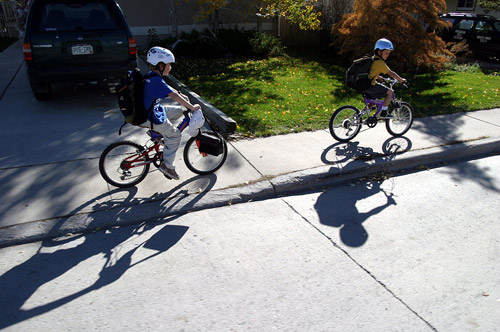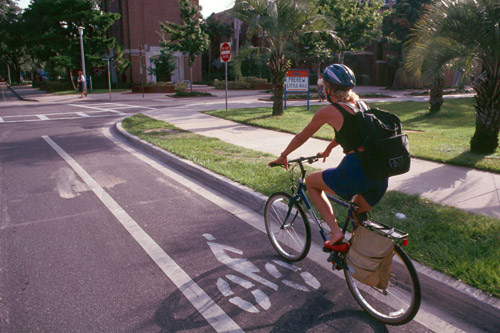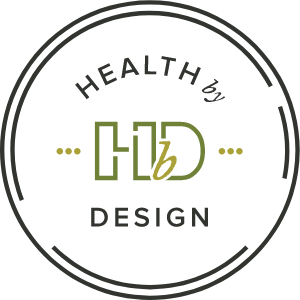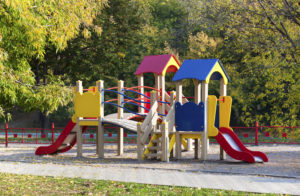The Built Environment, Infrastructure, and Health by Design
What is the Built Environment?
Built environment is the term for our surroundings that are built, or created for society and our livelihoods. The built environment can have significant health impacts. and government agencies like the Environmental Protection Agency (EPA) and the Centers for Disease Control and Prevention (CDC) consider the health impacts of the built environment in their work. The EPA describes the built environment as, “the built environment touches all aspects of our lives, encompassing the buildings we live in, the distribution systems that provide us with water and electricity, and the roads, bridges, and transportation systems we use to get from place to place. It can generally be described as the man-made or modified structures that provide people with living, working, and recreational spaces. Creating all these spaces and systems requires enormous quantities of materials.” The CDC further makes the link between the built environment and public health: “the built environment includes the physical makeup of where we live, learn, work, and play—our homes, schools, businesses, streets and sidewalks, open spaces, and transportation options. The built environment can influence overall community health and individual behaviors such as physical activity and healthy eating.” Government agencies aren’t the only entities concerned with the built environment and its impact on health. Local organization Health by Design (HbD) is solely focused on this work. Jump IN contributing writer Madison Crider sat down with HbD’s Vincent Hill to learn more about what they do and the impact they make in our everyday lives.

The environment around you contributes to your health and one group is dedicated to improving it.
Health by Design is an organization that builds community capacity through policy change and promoting smart design. We interviewed Vincent Hill, a REACH Active Living Coordinator. “REACH – Racial and Ethnic Approaches to Community Health – is a national program administered by the Centers for Disease Control and Prevention to reduce racial and ethnic health disparities. Locally, this funding award has a priority emphasis on African American/Black populations, which experience a disproportionate burden of many chronic diseases, including hypertension, diabetes, and obesity. Health by Design is one of several partners in this county-wide initiative. “ Vincent’s role involves working in geographic areas with high numbers of pedestrian crashes to identify, prioritize and implement targeted best-practice countermeasures. Vincent said, “I directly engage with residents, neighborhood leaders, and local community organizations to conduct community outreach as well as plan and implement activities to achieve safer walking conditions.”

Health by Design works to look at the built environment through a public health lens to help ensure that Indiana communities have neighborhoods, public spaces, and transportation infrastructure. We started out by asking Vincent what “built environment” means and how it impacts or relates to public health. Vincent described the built environment as the man-made environment outside of the natural environment. Think about it as things that are constructed in a way that is intended to benefit people in a way that makes modes of travel more convenient, safer, and more accessible. “Therefore, food access, food insecurity, physical activity levels, health outcomes, education attainment, job security, and much more for a community is determined by the design of a community’s-built environment.” For example, the built environment could be described as anything public that is man-made including things such as buildings, sidewalks, crosswalks, curb ramps, streetlights, traffic signals, push to walk buttons at intersections, and more.

We asked Vincent what companies or organizations they work closest or most often with, a few he mentioned were Indy Parks, the City of Indianapolis department of Public Works and the Marion County Public Health Department. Health by Design works between these entities to relay information and concerns surrounding pedestrian safety and walkability from the community-level. Next, we asked how the Indiana Public Health Association relates to Health by Design, Vincent said IHPA builds capacity among public health professionals and partners to achieve health equity and well-being across the state of Indiana. To clarify we asked Vincent to explain what health equity means and he said, “Health equity means that everyone has a fair and just opportunity to be as healthy as possible. This requires removing obstacles to health such as poverty, discrimination, and their consequences, including powerlessness and lack of access to good jobs with fair pay, quality education and housing, safe environments, and health care.” Lastly, we asked Vincent what one thing was he wanted everyone to know or feel is most important the public understands about Health by Design and/or the built environment and how it connects to public health. Vincent replied with, “Health by Design promotes active living, which is about integrating physical activity into everyday routines, such as walking to school or work or biking to the library and park. Communities with transportation options and a mix of land uses encourage active living and has both direct and indirect impacts on public health. Direct impacts on public health may include improved mental health and greater mobility. Indirect impacts on public health may include traffic safety for vulnerable roadway users, air quality & environmental impacts, access to medical care, protected natural environments, strengthened economic development, reduced auto dependency, prevented criminal activity, enhanced community interaction, and less traffic congestion.”

Learn more about Health by Design by visiting here and download resources around the built environment and what it means here. The new infrastructure bill that will improve many aspects of the built environment across the country is nicely summarized here by the National Association of Counties.
Topics: Built Environment
Subscribe for more
Want more ideas for healthy schools, workplaces, child care providers, and families? Subscribe to our blog for weekly tips delivered right to your inbox!
Improving Physical Health Goes Hand in Hand with Supporting Mental Health NEXT »
What is Kinesiology?
